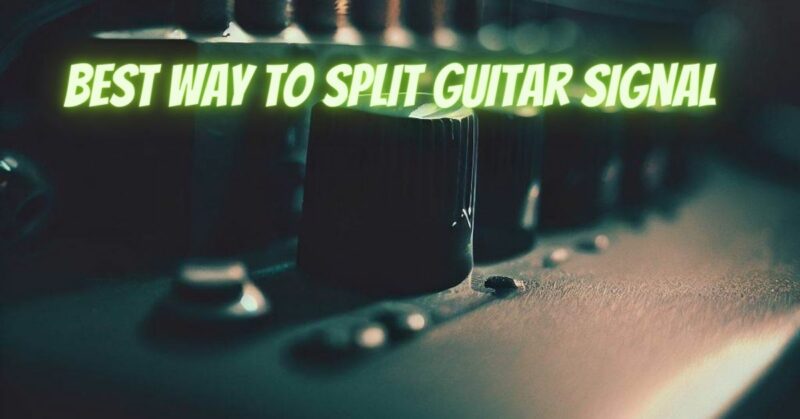Splitting your guitar signal opens up a world of possibilities for sonic exploration, allowing you to route your signal to multiple destinations simultaneously. Whether you want to blend different tones, create stereo effects, or send your signal to separate signal chains, finding the best way to split your guitar signal is crucial. In this article, we will explore some of the best methods for splitting your guitar signal and discuss their advantages and considerations.
- ABY Switch:
The ABY switch is a popular and versatile device specifically designed for signal splitting. It allows you to route your guitar signal to two separate outputs, such as two amplifiers or effects chains. ABY switches often feature various routing options, including A/B, A+B, and even buffered outputs for maintaining signal integrity over long cable runs.
Advantages:
- Offers flexible routing options.
- Allows you to switch between different outputs on the fly.
- Can maintain signal quality through buffering.
Considerations:
- Ensure proper grounding to avoid potential noise issues.
- Pay attention to impedance matching to avoid tone loss or signal degradation.
- Effects Loop:
If your amplifier features an effects loop, it can serve as a built-in option for splitting your guitar signal. By connecting one output to the main input and the other to the effects loop return or send/return jacks, you can send your signal to two separate paths.
Advantages:
- Utilizes existing equipment without the need for additional devices.
- Allows for independent control of tone and effects on each path.
- Can be easily switched on and off using the effects loop’s bypass function.
Considerations:
- Impedance matching and signal level adjustments may be required for optimal performance.
- Some amplifiers may have limitations or specific requirements for effects loop usage.
- Y-Cable:
A Y-cable is a simple and cost-effective method for splitting your guitar signal. It involves using a cable with a single mono 1/4″ connector on one end and two mono 1/4″ connectors on the other. You can plug one end into your guitar and connect the other ends to separate destinations.
Advantages:
- Easy and affordable solution.
- Works well for basic signal splitting needs.
- No additional devices or power requirements.
Considerations:
- Signal degradation may occur due to the passive nature of the Y-cable.
- Impedance matching and signal loss should be considered, especially over longer cable runs.
- Line-Level Splitter:
A line-level splitter is a professional-grade device commonly used in studio and live sound applications. It provides precise signal splitting capabilities with impedance matching, isolation, and signal buffering to maintain signal integrity across multiple outputs.
Advantages:
- Provides excellent signal fidelity and isolation.
- Offers multiple outputs for more complex signal routing.
- Helps eliminate noise and interference issues.
Considerations:
- Higher cost compared to other methods.
- Requires power and additional cables for proper operation.
- May not be necessary for basic signal splitting needs.
Conclusion:
The best way to split your guitar signal depends on your specific needs and preferences. The ABY switch, effects loop, Y-cable, and line-level splitter are all viable options, each with its advantages and considerations. Consider factors such as flexibility, signal quality, ease of use, and budget when choosing the method that best suits your requirements. Experimentation and careful consideration of impedance matching and signal integrity will help you achieve optimal results. So, explore the options, unleash your creativity, and enjoy the expanded possibilities of splitting your guitar signal.


